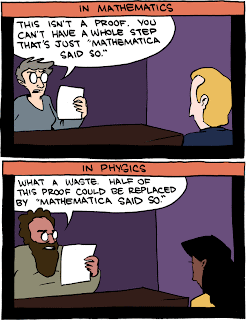Signatures of Majorana particles
How and when do Majorana fermions arise in a quantum many-body system? What are their experimental signatures? For some reason I find Kitaev's discussion somewhat ad-hoc. I do find the following more helpful and illuminating. Perhaps, it is just because it deals with things I am more familiar with. Start with the transverse field Ising model in one dimension. It describes interacting localised spin-1/2 particles. J is the nearest-neighbour ferromagnetic interaction. h is the transverse magnetic field. At J=h it undergoes a quantum phase transition from a ferromagnetic phase to a paramagnetic phase. One performs a Jordan-Wigner transformation which maps the spin-1/2 operators onto spinless fermion operators. This is a non-local transformation. The Hamiltonian then becomes quadratic in the fermion operators and so is analytically soluble via a Bogoliubov transformation. This means the "quasi-particles" are spinless fermions. [For the details see this article which




